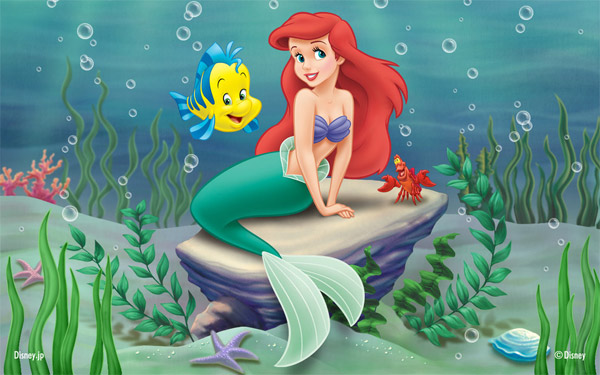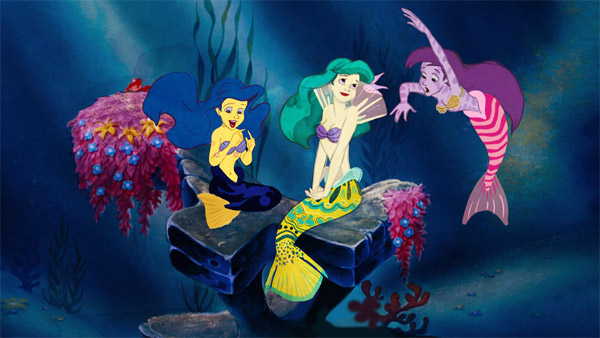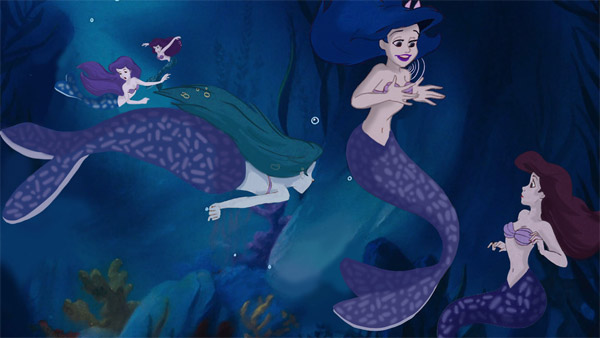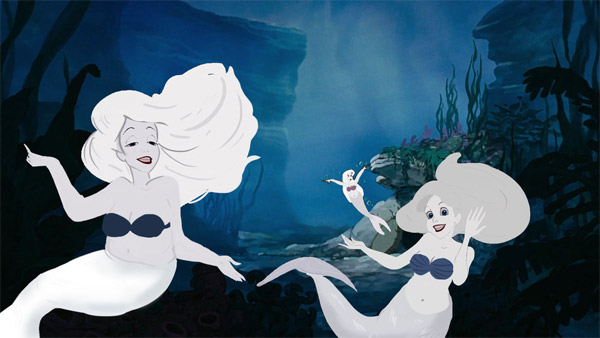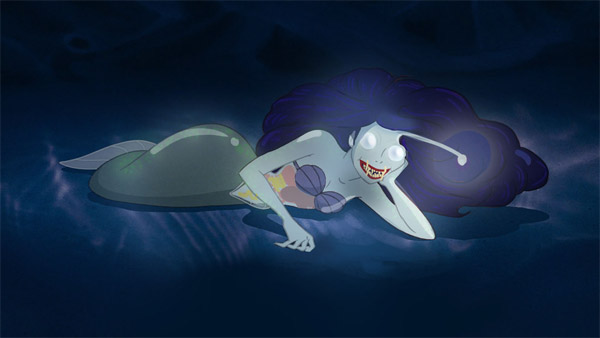We all know what Ariel looks like.
Ariel lived in Atlantica, a society of merfolk that was somewhere in the Atlantic.
But what would Ariel be like if she had evolved and lived someplace other than Atlantica?
Thankfully, aquatic evolutionary expert Joseph Shaw, associate professor at Indiana University School of Public and Environmental Affairs, and his young daughter Emma (a mermaid expert) told BuzzFeed all the answers.
Coral Reef Ariel would be tiny and amazingly colorful!
Shaw says, "In coral reefs, one would expect perhaps the most attractive phenotypes that would include beautiful color patterns in their tails, many examples of mimicry, and amazing eyesight to take advantage of the crystal clear, bright sunny waters."
Frills, colors, and pizzaz are the name of the game for coral reef mermaids. These mermaids would also be adorably tiny so they could hide in the various corals from predators.
Open Ocean Ariel would be sleek and would always travel in a group.
Shaw says, "Merpeople living in the open ocean would be expected to be fast, because they have a lot of ground to cover. They are also likely to be social (e.g., travel in pods) and therefore, have evolved advanced communication skills and we all know that Ariel’s voice is coveted for its beauty. These adaptations would provide a means for them to stay connected despite the vastness of the open ocean."
Ariel's coloring would also change if she evolved in the open ocean. She would have a darker color on her back (dorsal) side, and a lighter color on her belly (ventral) side, which would make it harder for predators to see her. Since the open ocean can be a dangerous place, Ariel would be extremely sleek and smooth, void of any frills that would provide resistance and slow her down when escaping a predator.
Arctic Ariel would be blubbery and pale, like a beluga whale.
Shaw says, "In the Arctic, one would expect to find fatter merpeople that are protected from freezing by the presence of antifreeze genes. They would also be expected to be some of the slowest, because metabolism would be very slow in these arctic creatures."
Being so pale would help Arctic Ariel blend in with the icebergs floating around her in case she needed to hide from a predator, because she isn't the fastest creature around. The antifreeze genes and the extra layer of blubber would keep her warm in these frigid waters!
Deep Sea Ariel would be from your worst nightmares.
Shaw says, "In the deep ocean, one might expect merpeople to have evolved long appendages to provide an enhanced sense of touch to help orient them, because the complete lack of light would eliminate sight. For this reason, some might even acquire bioluminescence to attract potential mates or lure unsuspecting meals."
Since food is so scarce in the deep sea, Ariel would have gnarly chompers in order to ensnare prey.
